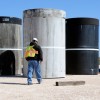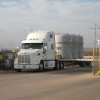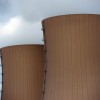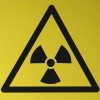Background
Increasingly poor air quality in Texas has sparked a statewide drive for clean energy production. Some areas of the state— including those around Houston, Beaumont, San Antonio and Dallas-Fort Worth—have been given a “non-attainment” classification by the Environmental Protection Agency (EPA). Areas of non-attainment are high in ozone, the precursor to smog and a key cause of asthma and respiratory impairment. Austin is on the verge of non-attainment. Non-attainment is expensive for businesses and government, as the EPA implements strict carpooling, gasoline type and usage, and other harsh measures once an area is classified as having poor air quality. Nuclear energy is an emissions free source of power that is considered to be a safe, reliable and affordable way to meet the state’s rapid population growth without polluting the air.
According to the EPA and the Nuclear Energy Institute (NEI), generating electricity with nuclear energy prevents the emission of pollutants like sulfur dioxide (SO2), nitrogen oxides (NOx) and greenhouse gases like CO2, associated with burning fossil fuels. Emissions of SO2 lead to the formation of acid rain. NOx is a key element of both ground-level ozone and smog. Greenhouse gases like CO2 contribute to global warming.
The U.S. Energy Information Administration (EIA) reports that Texas is among the 10 states with the greatest nuclear power generation capacity in the nation, with Texas accounting for almost 5% of the national total. Nuclear power makes up less than 5% of Texas’s total electric capacity, but produces almost 10% of the state’s electricity, third behind natural gas and coal. The Lone Star State exports roughly 2% of the electricity it generates.
There are two operating nuclear power plants in Texas. The South Texas Project (STP) is in Matagorda County near Bay City, about 90 miles southwest of Houston. Comanche Peak Nuclear Power Plant is in Somervell County near Glen Rose, TX, about 40 miles south of Fort Worth. Both have twin reactors.
STP Nuclear Operating Company (STP) manages the South Texas Plant for its three owners, who share the energy produced in proportion to their ownership interest:
•Austin Energy, 16 percent
•CPS Energy, 40 percent
•NRG Energy, Inc., 44 percent
STP’s two reactors can generate 2,700 megawatts of electricity, providing clean energy to two million Texas homes. The plant’s reactors went online in August 1988 and June 1989 and are the sixth and fourth youngest of the 104 operating reactors nationwide.
Comanche Peak, formerly owned and operated by Texas Utilities (TXU), was acquired by Luminant in 2004. The plants reactors went online in 1990 and 1993 and have an operating capacity of 2,300 megawatts of electricity.
According to the Nuclear Energy Institute (NEI), the South Texas Plant and Comanche Peak combined supply 60 percent of Texas’ emission-free power and help improve the air quality statewide. Together, the two Texas plants avoided the emission of 64,000 tons of SO2, 17,000 tons of NOx and 30 million metric tons of CO2 in the year 2010. Texas anticipates significant growth in electricity demand in the coming years, and both of the Lone Star State’s nuclear plants are planning to add reactors.
The EIA predicts that demand for energy will grow by 24 percent by the year 2035. Several energy companies are planning to build nuclear power plants to meet electricity demand in a way that is cost effective and protects air quality. In Texas, Exelon, Luminant and NRG Energy have filed license applications with the U.S. Nuclear Regulatory Commission to build at least five reactors in Victoria County, Glen Rose and Matagorda County. Plans for expansion in Matagorda were put on hold after the March 2011 earthquake in Japan caused a nuclear disaster at the Fukushima Nuclear Power plant, 155 miles north of Tokyo. Amarillo Power/UniStar is planning to build one additional reactor near Amarillo, but plans there have also hit delays. Upon completion, the plants could provide enough electricity to serve 6.8 million homes annually.










